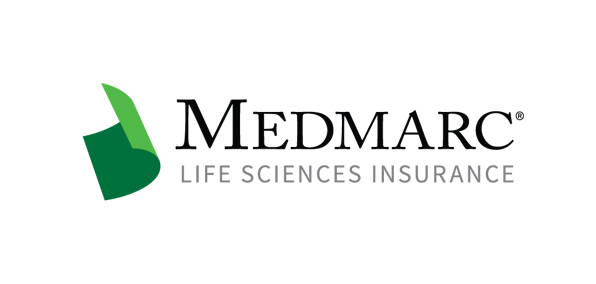Claims Burgeoning in California Courts
California is home to many drug and device manufacturers and distributors. And while California is apparently an attractive domicile for these businesses, California has been less kind to life sciences companies when they appear before state courts as defendants in products liability actions. For example, California is only one of two states that allows for “innovator liability.”2 The doctrine of innovator liability provides that a defendant that did not manufacture or distribute an allegedly defective product that caused harm to the plaintiff, can be held legally liable to the same extent as the manufacturer of that product. Additionally, the California Supreme Court has affirmed the validity of several factual exceptions to the preemption defense of generics manufacturers, most notably based on the manufacturer’s “failure to timely communicate changes to warnings/labelling.” These factual arguments eviscerate the Supreme Court’s decision in Pliva, Inc v. Mensing3 and have profound public policy implications for the generics industry. Lastly, California is one of a small number of states that allows an “innocent distributor” (a distributor that did not modify the product, did not participate in the warnings or labelling of the product, or make unauthorized warranties about the product) to incur the same liability as the manufacturer of the product. These are but a few of the more controversial rulings of the California court system, and they help to explain why over 80% of the plaintiffs in the California coordinated proceedings are out-of-state residents.
Commonly, when a plaintiff brings a lawsuit in a jurisdiction that is hostile to defendants or to life sciences companies, specifically the defendant will attempt to remove the case to a jurisdiction in which it will be easier to defend its case. The California courts, however, have made it difficult for defendants to move cases elsewhere. Once a plaintiff files in California, a company is not going to avoid adjudication by the California courts if it is named as a defendant. This is true even if the company’s sole connection to California is that it sold a product in that state.
A quick review of jurisdictional principles is in order. Jurisdiction can be either subject matter or personal. Subject matter jurisdiction is the right of a court to hear a case. Personal jurisdiction is jurisdiction over a party by a court. Personal jurisdiction can be general or specific, but it must always comport with due process under the Constitution. General jurisdiction is the legal authority of a court to entertain whatever type of case comes up within the geographical area over which its power extends. In Daimler A.G. v. Bauman,4 the United States Supreme Court addressed broad general jurisdiction issues only where that company is “essentially at home.” Absent particular and exceptional circumstances, general jurisdiction will exist only in two forums: where a company is incorporated and where it has its principal place of business. Prior to Daimler, the key case in California was a First District of California, Court of Appeals case—Bristol-Myers Squibb v. Superior Court (Anderson)5—which created specific jurisdiction for the California coordinated proceedings court to hear mass torts brought by non-resident plaintiffs against out-of-state defendants.
So what did California do in light of the Daimler decision? It doubled down on its argument in support of specific jurisdiction. On August 29, 2016, the Supreme Court of California issued its response to the appeal in the Anderson case, which involved mass tort litigation against a defendant that was neither headquartered nor incorporated in California. Arguably the defendant’s only nexus to California was that it sold its product there. Seeing that personal jurisdiction was addressed squarely within the Daimler case, and that Defendant Bristol-Myers Squibb’s business contacts in the state weren’t enough to invoke general jurisdiction, the California Supreme Court, in a 4-3 decision, affirmed the Anderson holding supporting a form of specific jurisdiction in mass tort litigation. The Court ruled that Bristol-Myers marketed and distributed the drug in California and had research and development facilities within the State, which the Court argued, were sufficient to trigger specific personal jurisdiction. The Anderson Court announced a sliding scale multifactorial test for a company’s activities within the State for the purpose of determining whether specific jurisdiction is fair or not. This particular approach is in direct conflict with a number of U.S. Supreme Court decisions, making it likely to be appealed to the High Court.
But what does this all mean? It means that for now California (a very unfavorable forum for defendants) is now the favorite forum for California non-residents to sue non-resident corporate defendants. And once there, because of California’s rules on specific jurisdiction, these defendants have no hope that their claims will be dismissed based on jurisdiction. For these reasons, we can anticipate that California will remain a favorite jurisdiction for plaintiffs in products liability actions involving life sciences companies.
----------------------------------------------------------------------------
1 Americans for Tort Reform: Judicial Hellholes 2015-2016.
2 Conte v. Wyeth, 85 Cal. Rptr.3d 299 (Cal. App. 2008).
3 131 S. St. 2567 (2011).
4 571 U.S. 310 (2014).
5 Slip Op. Ct.App. 1/2 A140035.
For additional resources contact the Marketing department
Phone: 888-633-6272
Medmarc is a member of ProAssurance Group, a family of specialty liability insurance companies. The product material is for informational purposes only. In the event any of the information presented conflicts with the terms and conditions of any policy of insurance offered from ProAssurance, its subsidiaries, and its affiliates, the terms and conditions of the actual policy will apply.
Copyright © 2026 - Medmarc
